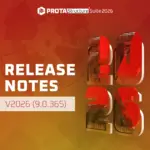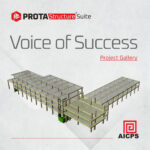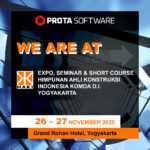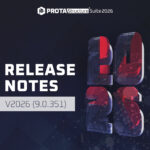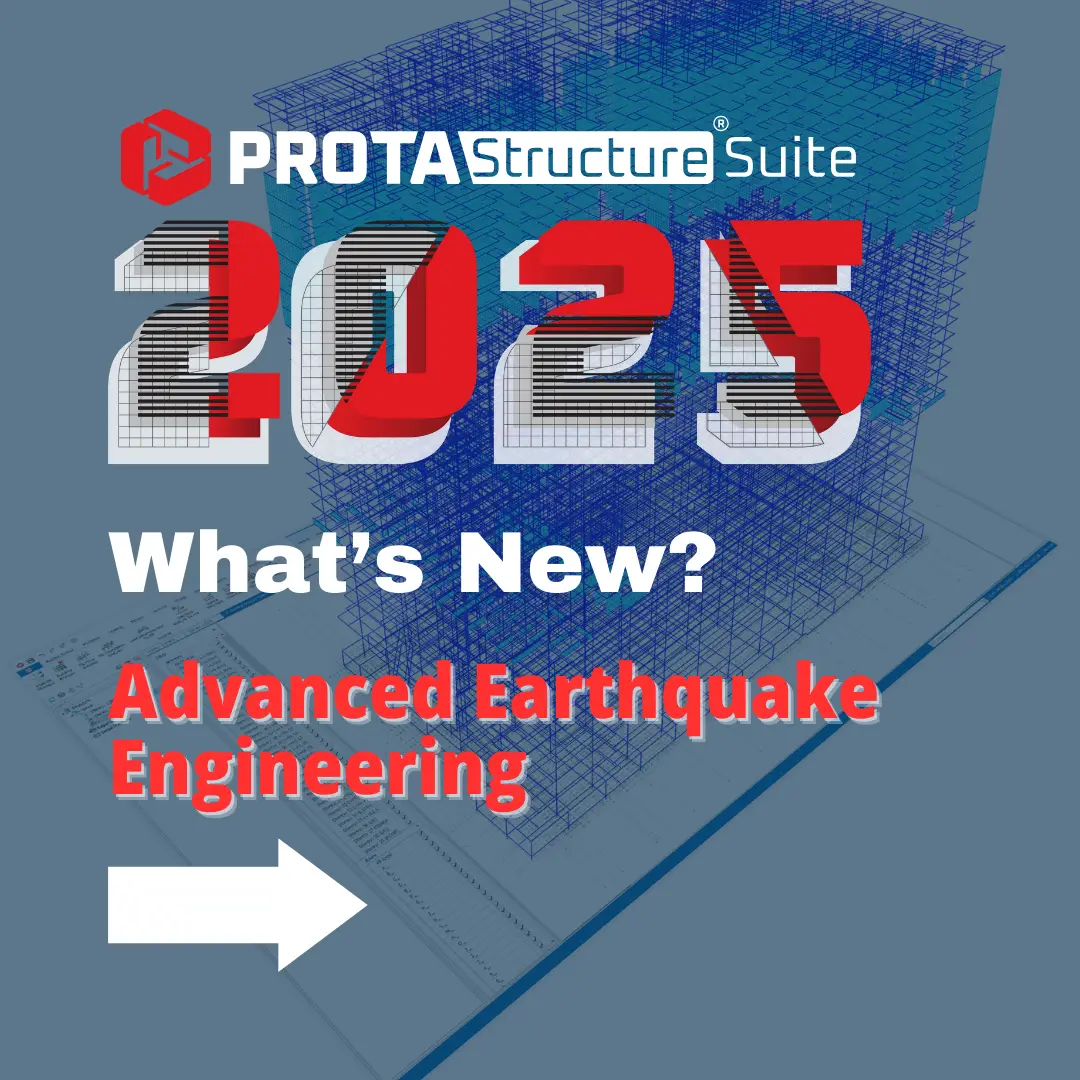
Advanced Earthquake Engineering in ProtaStructure 2025: Unveiling Vertical Earthquake Analysis and Modal Pushover Innovations
Advanced earthquake engineering takes a leap forward with ProtaStructure 2025, introducing cutting-edge tools to tackle complex seismic challenges. With standout features like Vertical Earthquake Analysis and Modal Pushover Analysis, ProtaStructure empowers engineers with innovative solutions. These advancements mark a new era in structural analysis, blending precision and flexibility to better equip buildings for withstanding seismic forces.
Advanced Earthquake Engineering: Vertical Earthquake Analysis with Two Powerful Approaches for Complex Seismic Scenarios
-
The Approximate Static Approach
- This simplified method scales gravity load results by a fraction of the horizontal spectral acceleration (e.g., 0.2SDS). Though it doesn’t account for vertical vibration modes or a dedicated vertical spectrum, it is highly effective for a wide range of structures.
- Why Choose It?: This approach is ideal for structures with limited irregularities or without complex elements such as transfer columns or long cantilevers. It provides a straightforward solution without the need for advanced seismic analysis.
-
The Modal Spectrum Analysis Method
This method scales gravity load results using a fraction of the horizontal spectral acceleration. It doesn’t account for vertical vibration modes or a dedicated vertical spectrum in its analysis. However, this method is highly effective for a wide range of structural designs.
Choose this approach for structures with limited irregularities and no complex elements like transfer columns. It offers a straightforward solution without requiring advanced seismic analysis for the structure.
Engineers can select the most appropriate method, ensuring compliance with international seismic codes. For further details, the ProtaStructure Design Guide – Vertical Earthquake Effects provides comprehensive modeling tips and guidance.
Advanced Earthquake Engineering: Modal Pushover Analysis for a New Level of Simplicity and Precision
Traditional pushover analysis struggles to accurately assess taller and more complex building structures. ProtaStructure 2025 solves this issue by introducing Modal Pushover Analysis (MPA), offering a sophisticated yet accessible solution. Using Chopra & Goel’s (2002) methodology, MPA bridges the gap between single-mode pushover and complex non-linear time-history analysis.
- How It Works: ProtaStructure 2025 performs pushover analyses for each significant vibrational mode, combining the results using the Complete Quadratic Combination (CQC) method. This ensures accurate assessments, even for buildings with higher mode effects or irregular geometries.
- Why It Matters: For high-rise structures or those with torsional irregularities, MPA offers a more accurate assessment of a building’s seismic performance without the complexity of a full-scale time-history analysis.
This feature makes ProtaStructure 2025 an invaluable tool for modern seismic design, providing greater precision for complex structures.
Enhancing Building Assessment and Performance-Based Design (PBD)
Advanced earthquake engineering in ProtaStructure 2025 goes beyond standard seismic analysis, offering a suite of enhancements that streamline building assessments and elevate user experience.
- Improved Result Processing: Engineers can now process non-linear analysis results faster, thanks to performance tweaks that streamline workflows.
- Member-Specific Non-Linear Modeling: The ability to assign non-linear properties to individual structural members gives engineers greater control over their designs.
- Estimated Reinforcement for Individual Members: This practical feature allows input of estimated reinforcement values for specific members, ensuring real-world conditions are reflected in the analysis.
These improvements make it easier for engineers to confidently carry out complex structural assessments.
Optimized Performance and Efficiency Gains
In addition to its powerful new features, ProtaStructure 2025 has been optimized for better performance, ensuring faster and smoother workflows:
- Parallel Processing with OpenSees Integration: Engineers can now use parallel processing during OpenSees analyses, speeding up large-scale seismic assessments.
- Better Convergence with Modeling Tweaks: Specific members like basement walls and cantilever beams are now assumed linear elastic during non-linear assessments, reducing convergence issues and improving accuracy.
- Improved Memory and Performance: Optimizations in result storage during time-history analysis reduce memory usage without sacrificing accuracy. Users can control the resolution of recorded results, adjusting performance to suit their needs.
With these enhancements, ProtaStructure 2025 remains a leader in seismic design software, offering engineers innovative and reliable solutions for their most challenging projects.
Stay tuned for in-depth guides, webinars, and resources to fully unlock the potential of ProtaStructure 2025’s groundbreaking features!
Discover the Powerful New Features of ProtaStructure Suite 2025! Watch now on our YouTube channel!





